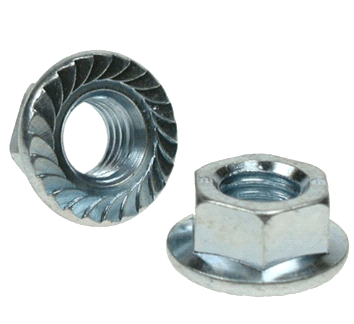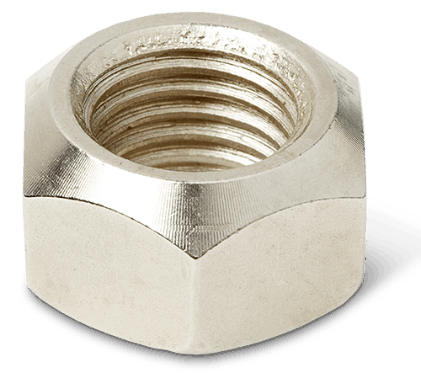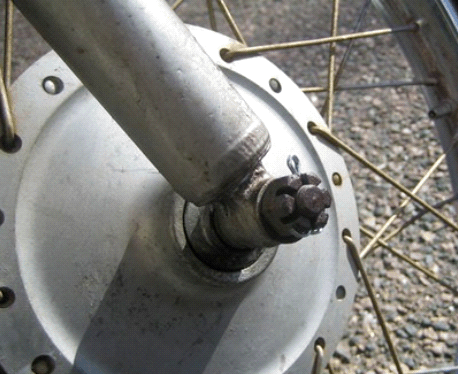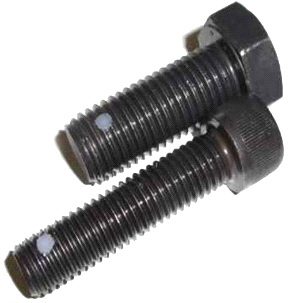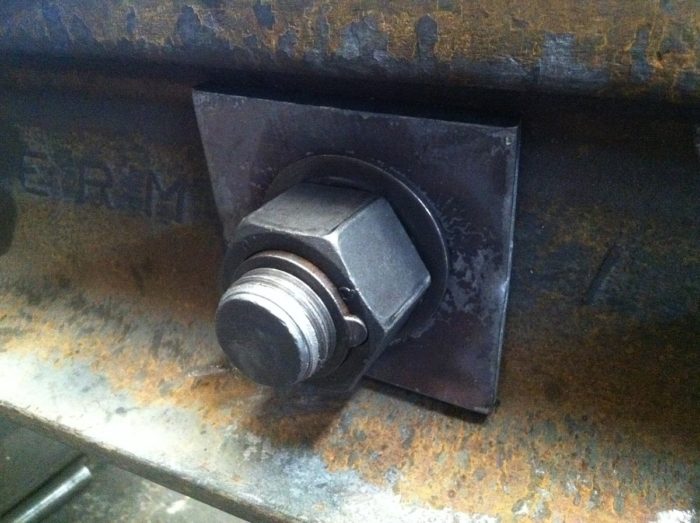
Nuts are the basic counterpart to bolts and screws. Most folks do not realize that nuts have grades just like screws. Typically, these grades will be stamped on the nut and need to match the corresponding bolt grade. For instance, if I take a grade 8 screw which will be between Rockwell C33-C39 the nut will be between C24-C36.
The highest selling screw is grade 8. Unfortunately, not many designers know that grades need to match because the highest selling nut is a grade 5.
The distribution of load on the nut is important as well. In general, the load is distributed on the first four threads of the nut. This means that a structural nut needs to have at least four threads of engagement. If the nut is the wrong grade, it will take more threads to distribute this load. A standard nut does not account for this. Match your Screw and Nut grades.
When mismatched grades fail, it will look like the nut is trying to be rolled inside out until the screw can no longer engage the internal threads.
Types of Lock Nuts
Making sure a thread will stay engaged is essential to a good fastening system. Locking nuts provide a great mechanism to do this, but there are other options we will discuss.
Serrated Flange Nut
The first type is a serrated flange nut, which, when tightened has ridges that grab onto the parent material, providing a locking effect. However, these can cause issues with rust as the teeth lock onto the material scratch away paint or other coatings.
Unlike the others, it locks onto the mating surface and not the bolt. For this reason, it is not recommended in high vibration applications. Finally, never use these with a washer underneath.
Nylon Insert Lock Nut
The next type is a nylon insert lock nut or ‘nylock’ which looks like a regular nut, except for the crown on the top of it. The blue part shown is a piece of nylon and it is inserted into the crown. When the bolt is inserted, it interferes with the nylon causing it to lock the nut in place.
In all honesty, I do not like these nuts because if you use an impact wrench or nut driver that tightens quickly, it will melt the nylon and make it impossible to remove the nut. Well, you can cut it off…but you get my point.
At this point, it is impossible to check the torque on the bolt because you are only testing how well the nut is attached to the bolt. If the nylon and screw do become fused together, your joint may become loose over time. Unless you can see a washer move, there will be no way to ensure the fastener is under tension.
These fasteners are not reusable.
Oval / Distorted Thread Lock Nut
So my preferred locking nut is an ovulated (oval) lock nut. This is a standard nut where the top of it is squished to provide the locking mechanism. The most common is to have the squish (yup, technical term) on the top, but it can also be in the middle. The oval nut overcomes the deficiencies mentioned earlier with the nylon lock nut. It also doesn’t interfere with the torque required to get proper clamping load, but you will need wrenches instead of your fingers to get it snug.
Unfortunately, these nuts are not reusable either so throw them in the trash if you need to replace them.
It is also important to note that the nut must always be a softer material than the screw. If the nut is harder, it will destroy the threads on the bolt. This will strip the bolt before it locks onto the fastener. For this reason, you should match metal types when using this type of lock nut.
Jam Nuts
Jam nuts are just regular hex nuts but not as thick. They are used by applying a standard hex nut on the bolt and apply the desired torque. Then screw the jam nut behind it. Holding a wrench on both the standard and jam nut, torque the jam nut to 1/4 to 1/2 of the torque on the standard nut.
Jam nuts are one of my least favorite locking methods. In high vibration situations, the nuts can easily break apart and possibly fall off. They are good solutions for tie rods in steering axles so that the alignment can be changed without disassembling multiple parts.
Another reason, I stay away from them is they require a longer bolt length. I’m paying for more for the bolt and the extra jam nut.
Castle Nut
Another type of lock nut is the called the Castle Nut. These feature a taller nut with recesses, usually six of them. The intent is to tighten the nut until it lines up with a cross drilled hole in the recesses. A cotter pin is then inserted, preventing the nut from ever backing out. This nut also has a few short-comings. First, there is increased cost with cross drilling the hole in the fastener and it requires additional time assembling.
The main reason I don’t like them, is there is a good chance that when this is at the proper torque, the hole and recesses will not align. You will either need to over torque or under torque. This problem can be eased by using fine threads instead of course threads. I would consider using a castle nut only if it was an application where the fastener could be loose but cannot come out.
Locking Mechanisms That Don’t Use Nuts
Micro-encapsulation
There are several locking systems which can be used alone or in conjunction with other mechanisms. A common one is called thread locking or micro-encapsulation. A locking compound, usually nylon is placed onto the screw itself. This type mechanically locks the fastener by pressing it against the side of the tapped hole. With these, you can torque them about three times before the patch is worn out and the fastener needs to be replaced.
Thread Adhesives
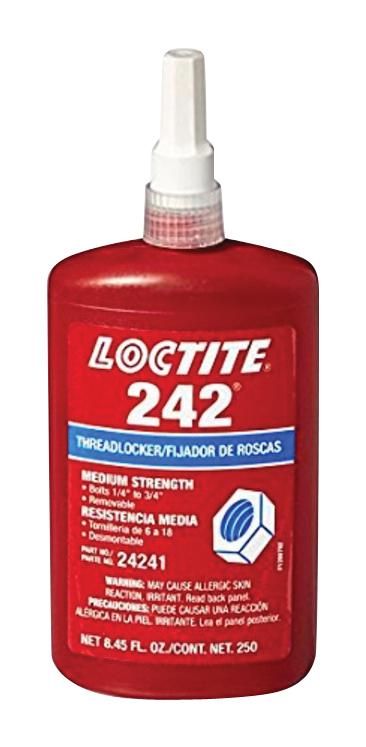
Another type of thread locking method uses an adhesive. A chemical adhesive is applied to the threads of a fastener just before it is installed and torqued. These fasteners need to be installed in a certain amount of time before reapplication is need. There are many different adhesives used and then are available in both permanent and semi-permanent formulations with the latter allowing you to re-torque the bolt.


